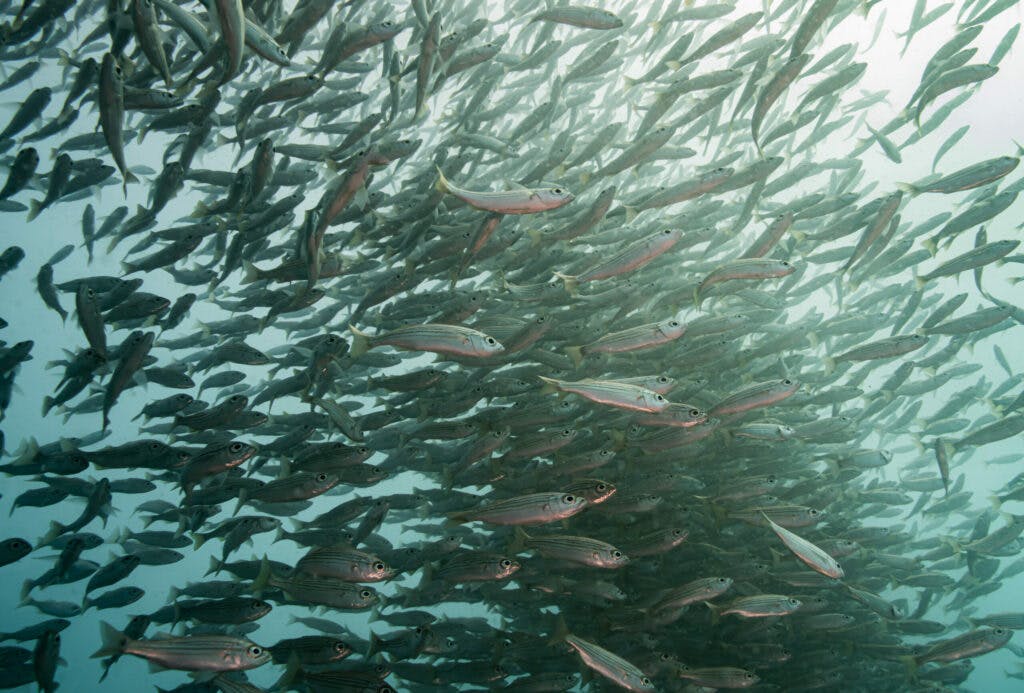- English
- Spanish
- Korean
- Filipino
- Armenian
- Chinese (Simplified)
Soft Bottom
Prev
Rocky Reefs
Next
Sandy Shores
Habitat Overview
If you are at a beach along Santa Monica Bay it’s very likely that the sand and other fine sediment that you see on the beach extend well past the waves to very impressive depths of more than 1,000 feet, (300 meters). This large, sandy plain may support eelgrass beds, large deposits of squid eggs, burrowing crabs, bat rays, halibut, and other flat fish. The soft bottom is the largest habitat on the bottom of Santa Monica Bay. Soft bottom is less productive and diverse compared with the rocky reef/kelp forest that it borders. That shared, many fish use both habitats as they grow older, or as part of a daily pattern of movement.
The soft bottom, being deep, isn’t as dynamic as the sandy shore, as the energy from waves lessens with depth. With enough sunlight and a reduction in wave energy eelgrass beds can form. These beds are usually between 20 and 70 feet, (7 to 23 meters) in depth. The eelgrass itself expands across the bottom with ‘rhizomes’ that connect the blades of the eelgrass and the roots. The rhizomes form a mat that can trap sand and hold the eelgrass bed together. The blades of the eelgrass grow to 2.5 feet, (75 cm) in length. Within this dense grassy meadow, the water slows, sediment drops out, organic material rich in carbon accumulates, and the grass creates a habitat.
Very little scientific study of these offshore eelgrass beds has been conducted. Data from the 1960s-1970s suggest that there was once much more eelgrass in Santa Monica Bay than exists today. Currently, eelgrass beds in Santa Monica Bay grow off of Malibu and north and west towards the Ventura-LA County line. Annual surveys by teams of biologists are mapping the extent of the grass, counting fish and invertebrates, and measuring light, temperature, and oxygen to learn more about the condition of this habitat.
Status
| Indicator | Score | Confidence |
|---|---|---|
| Habitat Extent | Moderate | |
| Habitat Vulnerability | Not Scored | |
| Structure & Ecological Disturbance | High | |
| Biological Response | Moderate |
Per the Soft Bottom habitat's 2015 condition, see below for condition details.
Why Is a Healthy Soft Bottom Habitat Important?
Soft bottom habitats are critical for the growth of vibrant eelgrass beds—and they support a vast range of marine species that are important to the overall ocean ecosystem and to humans.
Eelgrass Beds
Coastal marine soft bottom habitats support eelgrass beds (Zostera pacifica and Z. marina), which provide habitat for marine fishes and invertebrates, stabilize offshore sediments and reduce shoreline erosion. They also help to improve the sediment and water quality, carbon sequestration, amelioration of ocean acidification, economic and fishery support, and educational outreach opportunities.
Organisms Key to the Food Chain
These soft sediments provide both shelter and foraging grounds for thousands of benthic invertebrate species, ranging from tiny worms, shrimps and crabs, to sea stars, clams and sea slugs. These bottom organisms are near the base of the food web that supports an abundant and diverse assemblage of bottom-dwelling fishes.
Fish and Fishing
Soft-bottom fish found in the Bay include flatfishes, rockfishes, sculpins, combfishes, and eelpouts. Some of these fish utilize the ecotone between the sand and structures, such as California Halibut (Paralichthys californicus), California Scorpionfish (Scorpaena guttata), Barred Sand Bass (Paralabrax nebulifer), and White Croaker (Genyonemus lineatus), and account for a significant percentage of recreational fish catches from piers and boats.
Primary Challenges
Chemical Contaminants
Soft sediments are a major reservoir of chemical contaminants in the Santa Monica Bay. Many chemical contaminants bind to organic material on sediment particles, where they can accumulate to high levels and provide an ongoing source of exposure to marine life. Chemical contaminants have been introduced to this habitat primarily through historical wastewater discharges through outfalls offshore from Hyperion Treatment Plant (Hyperion) near the Los Angeles International Airport and the Joint Water Pollution Control Plant (JWPCP) near White Point on the Palos Verdes Peninsula.
Other significant contaminants come from dry and wet weather runoff from rivers and creeks and industrial discharges to the Bay. Historical contributors also include ocean dumping of containerized waste (Kivenson et al. 2019).
2015 Habitat Condition
Read more about soft bottom bethos habitat conditions through our data and research published in the 2015 State of the Bay Report.
Taking Action
Learn more about the work being done by SMBNEP partners and The Bay Foundation to protect and improve the Bay’s Soft Bottom habitats.
